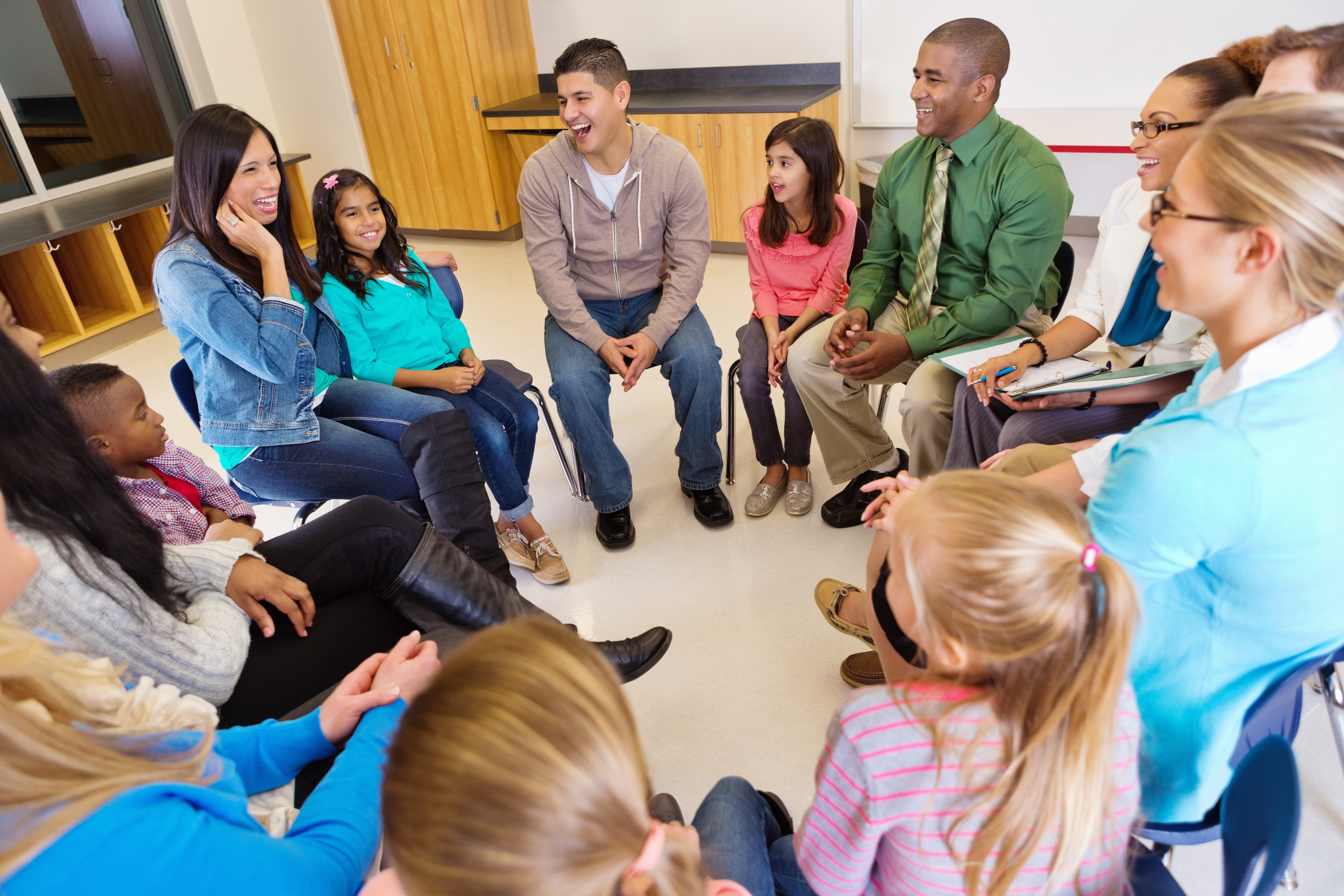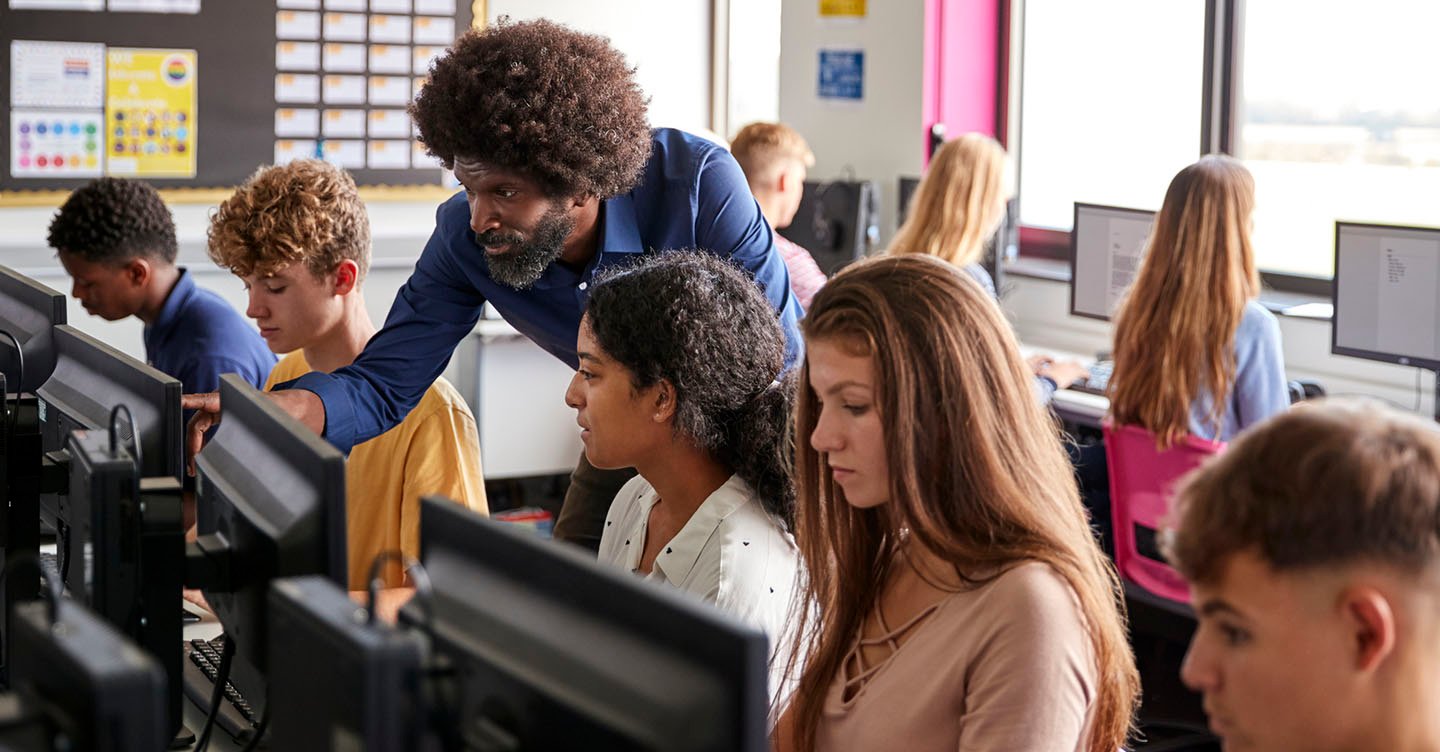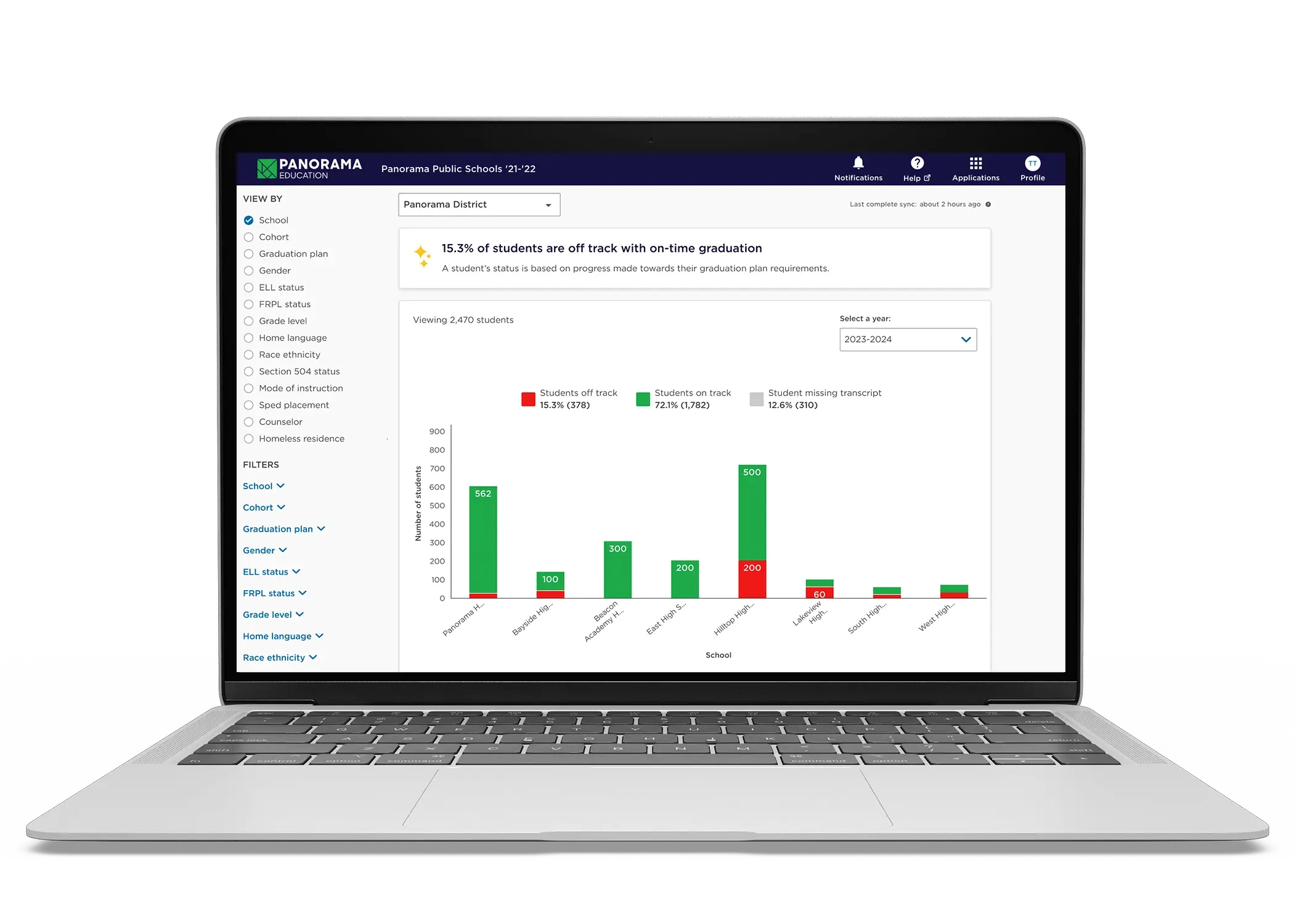We know that school climate and culture is linked to holistic student success. In fact, schools rated highly for a positive classroom climate are ten times more likely to see improvements in student achievement compared to those with a lower rating. So creating safe and welcoming educational settings is vital for the well-being of students and educators.
As your school or district prepares to welcome students back to school this year, now is the perfect time to focus on building a positive classroom culture. Here’s what you need to know about what it takes to create a positive learning environment for everyone in your school district.
Table of Contents
What Is a Positive Learning Environment?
Why is a Positive Learning Environment Important?
How to Create a Positive Classroom Culture
Why Panorama Education is the Best Solution for Fostering a Positive Classroom Culture
What Is a Positive Learning Environment?
A positive learning environment is a classroom or school setting where students, faculty, and staff feel safe, supported, and respected. It’s a place where students can thrive academically because they feel comfortable asking questions and are encouraged to succeed.
In a school with a positive environment in the classroom, students collaborate on projects, sharing their thoughts freely in a supportive atmosphere. Educators actively engage with their students, offering encouragement and clear guidance, while administrators provide the support staff need to succeed—and celebrate their successes.
In a school like this, leaders ensure that the policies and initiatives they introduce prioritize both student well-being and academic growth. This approach—involving everyone from the classroom to the district level—creates a community where the whole community is committed to the success and well-being of every student.
However, it’s important to also remember that positive learning environments are not just student-focused. To be effective, teachers and staff must feel empowered by their district leaders to thrive. Feedback surveys, opportunities for professional learning and growth, and teacher retention strategies can all be components of a positive learning environment, where educators are empowered and can thrive.
Let's take a look into the positive impacts of creating this kind of space in schools.
Why Is a Positive Learning Environment Important?
Creating a positive classroom climate is foundational to supporting overall student success—from academic performance to attendance and positive behavior. It also benefits educators and school communities. Here’s what your district will gain when you create empowering learning spaces:
1. Enhanced Academic Achievement
Students who feel safe and supported are more likely to be fully involved, participating actively in class and engaging with the material. This, in turn, leads to better academic performance.
2. Positive Behavior and Social Skills
Research shows that a positive classroom culture also leads to better behavior among students. This is because these kinds of spaces encourage respectful interactions and collaboration among students, reducing incidents of bullying and promoting healthy relationships.
3. Strong Teacher-Student Relationships
Another benefit of having a positive environment in the classroom is the increased respect and trust between teachers and students. Leveraging these relationships, teachers are better able to understand the needs of their students, adapt instructional strategies, and provide personalized support.
4. Family and Community Engagement
An inclusive classroom atmosphere brings families and the community into the educational process. When schools foster strong partnerships with parents and local organizations, students receive more consistent support both at home and in school. This collaboration means that everyone is working together towards the same goals, leading to a more comprehensive, well-rounded educational experience for every student.
5. Increased Teacher Satisfaction and Retention
Teacher turnover is high, and 86% of public schools have reported significant difficulties in the search to hire new educators. To avoid the difficulties of hiring teachers and the negative impact that low retention rates have on students, it’s crucial to work to build a more positive environment for teachers and staff.
Educators and administrators who work in a positive learning environment are more likely to feel supported and satisfied with their jobs, which can reduce burnout and improve retention rates. A supportive environment that also encourages professional development and collaboration helps teachers continuously improve their skills and effectiveness.
Success Story: How DC Public Schools Uses Panorama to Build a Culture of Love
How to Create a Positive Classroom Culture
As your district kicks off the new school year, now is a great time to focus on building a positive culture. Here are some strategies—both that teachers can use in the classroom, and that administrators can implement throughout the school year:
1. Use Positive Affirmations
Start each day with positive affirmations to create a welcoming and encouraging school culture. This approach helps students feel safe and confident in participating, fostering a positive atmosphere that supports their learning. Creating a culture of caring throughout the day is a great way to encourage students to feel safe participating in class. Consider using Panorama Check-Ins to quickly and easily ask students how they are doing—focusing on students’ well-being and learning environment.
2. Conduct Surveys
It’s hard to create a positive school culture without understanding the needs of your school community. What does a positive classroom culture mean to students, staff, and families in your district? Reliable assessment tools—such as surveys—allow districts to understand diverse perspectives and monitor the effectiveness of initiatives. Continuous feedback loops ensure that strategies are responsive to the evolving needs of the school community.
School climate surveys provide opportunities for students, families, and teachers to provide valuable feedback. These insights help educators understand the needs and concerns of the school community, making it easier to create a positive, responsive environment where everyone feels heard and supported.
3. Outline Classroom Rules
A positive school environment is one in which students understand what behaviors are expected from them. Clearly and positively framed rules help students understand expectations and create a sense of security. What are “positively framed rules”? For example, instead of dictating “No yelling in class”, promote a policy that states “We value respectful communication, so everyone can be heard.”
4. Use Data Driven Insights
Leveraging data helps educators understand their students holistically. When teachers and school & district teams can view student data across academics, attendance, and behavior, they can better understand every student’s unique story and needs across the district. A platform like Student Success makes it easy to understand student needs and provide targeted support to drive academic outcomes.
5. Keep Learning Content Relevant
Teachers can keep content relevant by connecting it to students' lives and interests, providing choice and ownership, making real-world connections, and focusing on meaningful applications. This involves knowing students well, allowing them to choose topics and projects, discussing current events, and prioritizing content with clear value. These strategies make learning engaging and memorable—and increases student connection to the classroom.
6. Provide Personalized Feedback
Creating a positive classroom culture with personalized feedback involves providing frequent, specific, and actionable feedback and using multiple modalities to cater to different learning styles. Teachers should frame feedback in a growth-oriented manner, encourage self-reflection and peer review, and gather and act on student feedback to create a responsive learning environment.
Additionally, teachers should be provided with personalized feedback from their supervisors so that they feel supported in their work and are well-equipped to improve the classroom experience. Personalized professional development and mentorship are essential for teachers' growth. Administrators should carry out regular observations and deliver actionable feedback to help teachers improve and feel supported. Similarly, celebrating teachers' successes boost their morale and acknowledge their hard work.
Why Panorama Education Is the Best Solution for Fostering a Positive Classroom Culture
It takes more than just a well-designed curriculum to make a school. A positive classroom culture promotes student success and builds a strong school community of students, teachers, and families.
However, creating a positive school climate requires strategic steps and the right resources. To lay the foundation, it's crucial to use high-quality instruments for data collection—allowing you to capture diverse perspectives from across your district.
With Panorama Feedback Surveys, you can feel confident in the validity and reliability of your results, knowing you've reached—and heard—every member of your community. Moreover, armed with the robust analytics provided by a platform like Student Success, you're equipped to transform survey responses into actionable strategies that make a lasting positive impact on classroom culture.
Learn how Panorama can support your district's needs and priorities this school year







